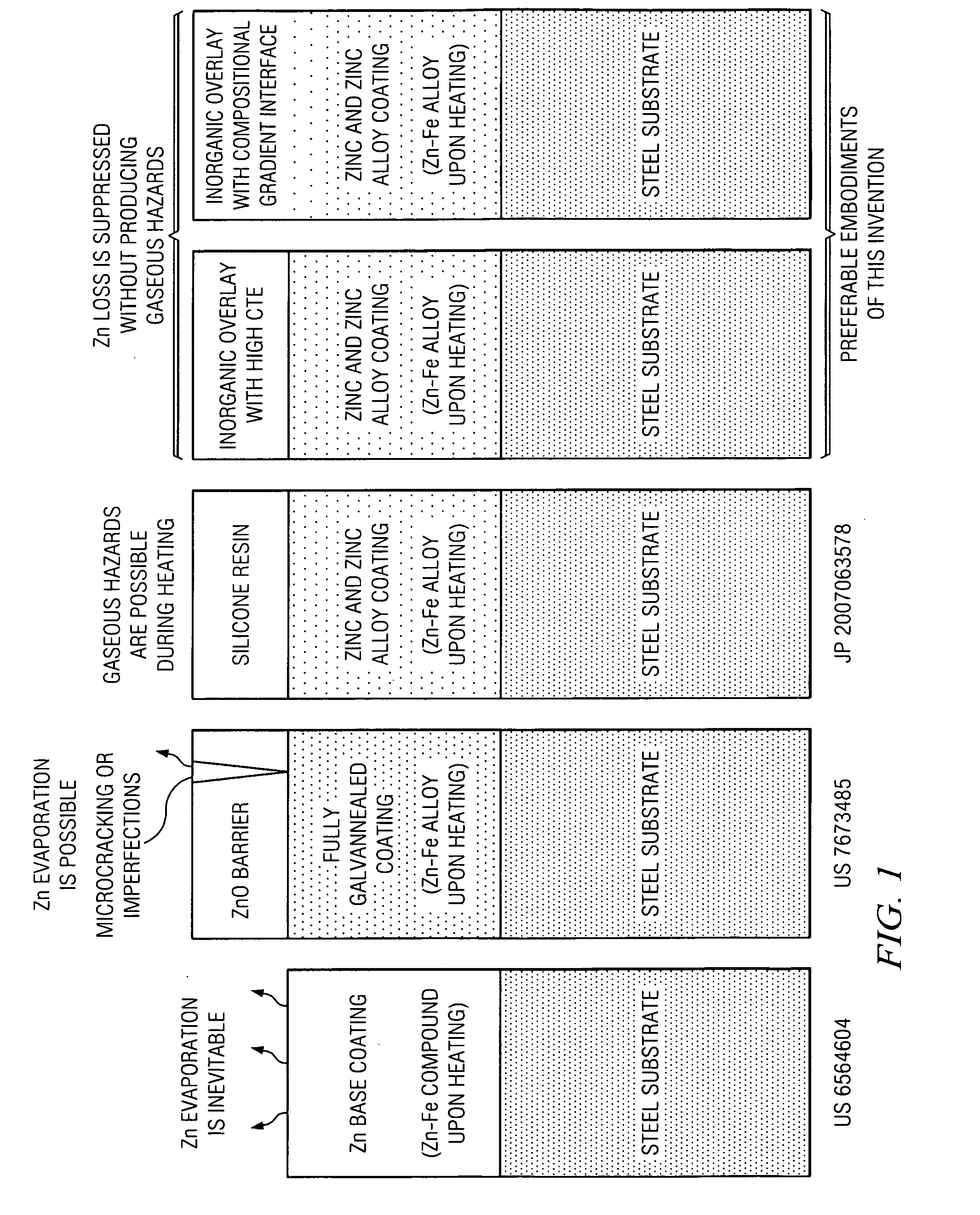Zinc coated steel with inorganic overlay for hot forming
a zinc alloy and hot forming technology, applied in the direction of superimposed coating process, heat treatment apparatus, manufacturing tools, etc., can solve the problems of high production cost, difficult to form complex parts such as a and b pillars, cross members and bumpers, and large volume of ultrahigh strength steels, so as to prevent or restrict the loss of zinc
- Summary
- Abstract
- Description
- Claims
- Application Information
AI Technical Summary
Benefits of technology
Problems solved by technology
Method used
Image
Examples
Embodiment Construction
[0019]The drawing in FIG. 1 illustrates a comparison of the inorganic overlay of this invention with the zinc coating described in U.S. Pat. No. 6,564,604 to Kefferstein et al., and the zinc oxide layer on the zinc-iron alloy coating described in U.S. Pat. No. 7,673,485 to Imai et al. Kefferstein et al does not disclose any measures to address the evaporation of high vapor pressure zinc at elevated temperatures in hot forming. Imai et al attempts to prevent zinc evaporation by two mechanisms, (i) a zinc oxide barrier layer and (ii) increased melting point of the galvannealed coating with at least 5 weight percent iron. By comparison, the present invention provides two preferred embodiments to suppress the loss of zinc in hot forming with inorganic overlays, one with a high coefficient of thermal expansion, and another with a composition gradient at the interface of the zinc or zinc alloy coating and the overlay.
[0020]Investigations conducted in support of the present invention revea...
PUM
| Property | Measurement | Unit |
|---|---|---|
| temperature | aaaaa | aaaaa |
| tensile strength | aaaaa | aaaaa |
| temperature | aaaaa | aaaaa |
Abstract
Description
Claims
Application Information
 Login to View More
Login to View More - R&D
- Intellectual Property
- Life Sciences
- Materials
- Tech Scout
- Unparalleled Data Quality
- Higher Quality Content
- 60% Fewer Hallucinations
Browse by: Latest US Patents, China's latest patents, Technical Efficacy Thesaurus, Application Domain, Technology Topic, Popular Technical Reports.
© 2025 PatSnap. All rights reserved.Legal|Privacy policy|Modern Slavery Act Transparency Statement|Sitemap|About US| Contact US: help@patsnap.com


